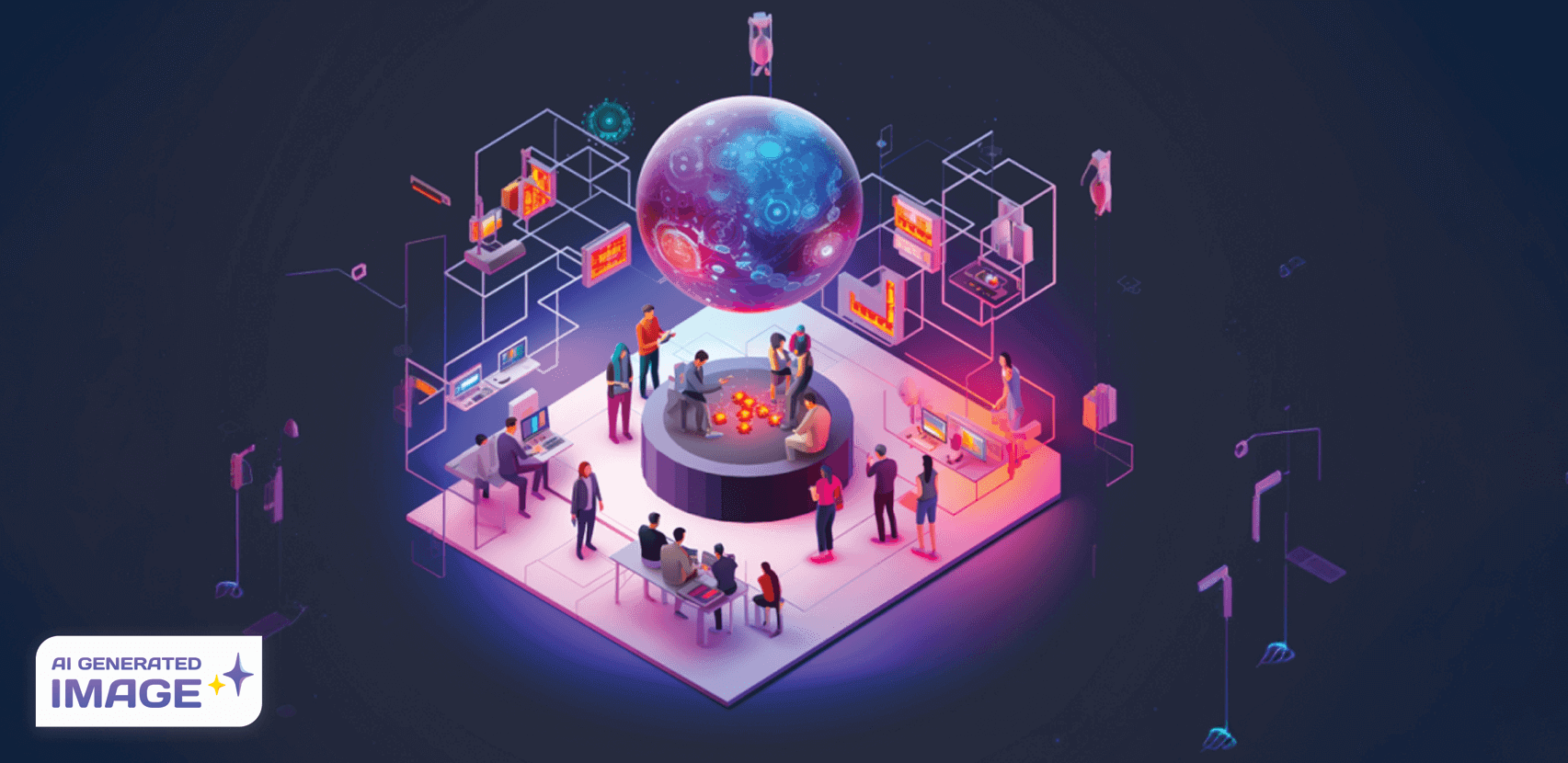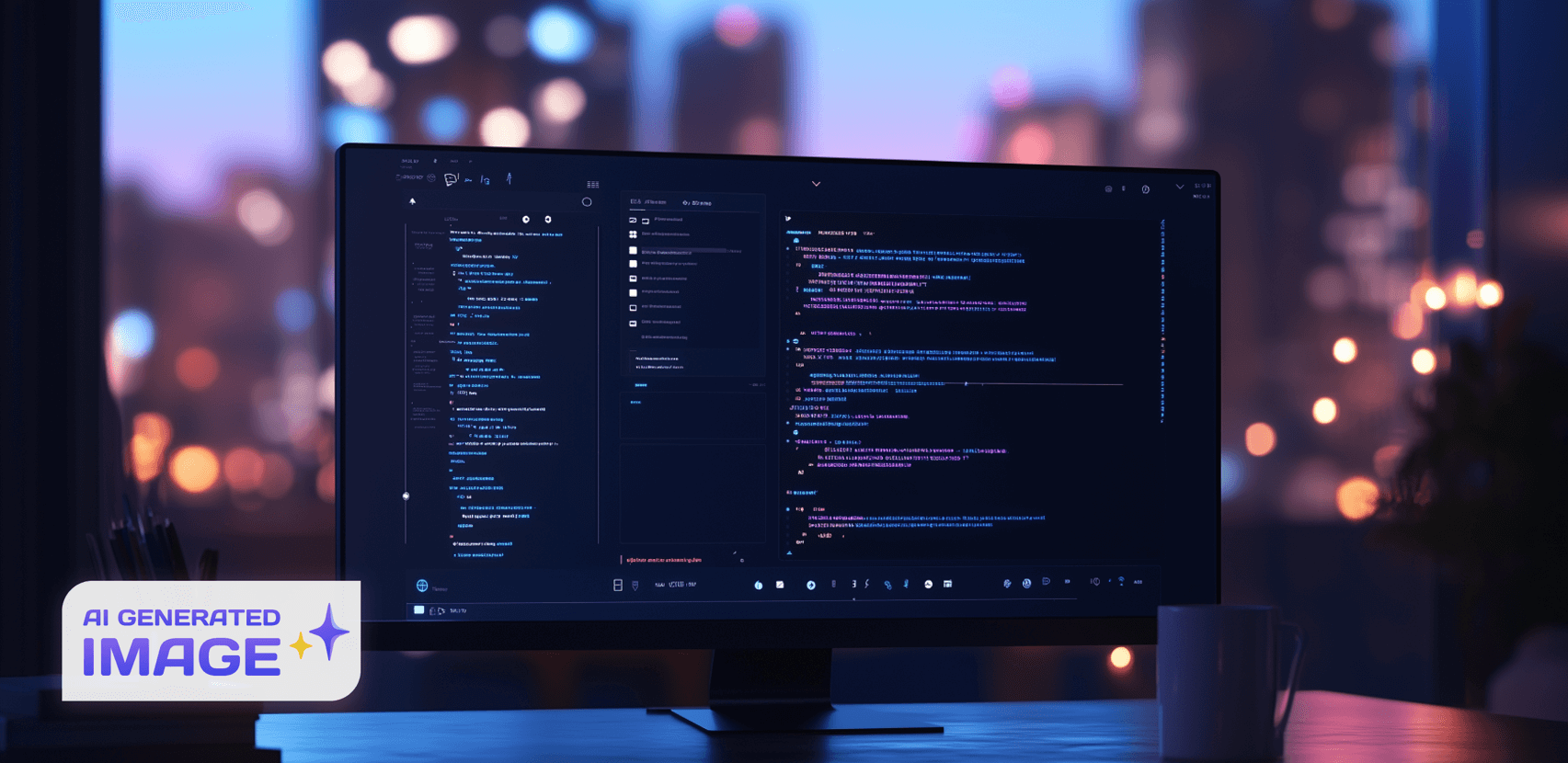AutoGen by Microsoft - A Game-Changer in AI Collaboration

As the field of Large Language Models (LLMs) continues to expand, businesses are seeking effective, scalable, and adaptable frameworks to support their needs. While some still struggle with AI models that deliver subpar outputs, a game-changing framework has emerged that promises to redefine the way we interact with AI — enter AutoGen!
In this article, we’ll delve into the details of AutoGen and explore the potentials of this innovative framework.
AutoGen Explained
AutoGen is an open source library released by Microsoft that enables multiple AI agents to work together. It was created to automate the process of building and managing AI agents, seamlessly operating on the user’s or other program’s behalf. Microsoft’s AutoGen framework works with AI agents that are always on standby, ready to process inputs and deliver high-quality outputs.
Imagine having a team of human experts working together, producing more efficient and better outputs than a single individual. Now, apply that concept to AI systems by having multiple LLMs, such as ChatGPT, collaborating to solve a problem — that’s AutoGen in action!
AutoGen’s Core Features
- A structure for LLM workflows: AutoGen simplifies the management, optimization, and automation of large language model workflows.
- Integration with other LLMs: AutoGen is not limited to working with OpenAI’s API; it can integrate with other LLMs that have an API.
- Customizable and conversable agents: AutoGen offers customizable agents that maximize the use of advanced LLMs, compensating for their limitations by integrating human prompts and other tools.
- Automated chats: Agents can have automated conversations, enhancing the efficiency of their collaborations.
The Importance of AI Agent Creation
AI agents are programs that carry out specific tasks within a system and behave autonomously utilizing LLMs. These agents can interact with users, other AI agents, and potentially the environment to accomplish their goals. By generating these AI agents within AutoGen, you’re providing your system with a collection of intelligent bots capable of adapting and evolving.
In today’s world, where automation and artificial intelligence are reshaping business operations, this is vital. AI agents handling complicated tasks can significantly increase productivity, cut expenses, and produce better outputs for businesses.
Components of AutoGen’s AI Agent Capabilities
- LLMs: AutoGen leverages LLMs as a vital component in the backend of AI agents. LLMs can adapt to different roles, each linked to unique system messages.
- Humans: AutoGen allows the integration of human feedback into agent discussions, acknowledging the significance of human input and participation.
- Tools: AutoGen recognizes the importance of tools in overcoming the limits of LLMs. It allows the utilization of tools via code generation and execution.
AutoGen’s Potential Use Cases
While AutoGen is still in its early stages, users are experimenting with how it can improve overall efficiency, precision, and consistent productivity in a business context. Here are some of AutoGen’s best use cases for business:
- Project Management Automation
- Operational Efficiency
- Real-time Decision Making
- Innovation and Product Development
Takeaways
AutoGen represents a pivotal leap forward in maximizing the potential of AI. By coordinating intelligent assistants instead of just connecting them, this framework achieves heightened efficiency, accuracy, and nuance.
The ability to seamlessly integrate multiple LLMs, incorporate human insight, and utilize specialized tools creates versatile AI agents for tackling complex tasks. Within this structured environment, users can efficiently build and deploy custom AI agents purposely built for their needs—whether improving customer interactions or optimizing complex workflows, the applications are vast.
In an AI-driven landscape, AutoGen represents the next stage in harnessing collective intelligence—an organizational advantage for the future. This innovative framework puts the power of AI cooperation directly into the users’ hands.
Sources
- https://www.microsoft.com/en-us/research/blog/autogen-enabling-next-generation-large-language-model-applications/
- https://microsoft.github.io/autogen/docs/Getting-Started/#:~:text=AutoGen%20is%20a%20framework%20that,and%20seamlessly%20allow%20human%20participation.
- https://www.analyticsvidhya.com/blog/2023/11/launching-into-autogen-exploring-the-basics-of-a-multi-agent-framework/
- https://www.linkedin.com/pulse/unveiling-power-autogen-why-agent-creation-brad-holt
- https://medium.com/@krtarunsingh/mastering-autogen-a-comprehensive-guide-to-next-generation-language-model-applications-b375d9b4dc6d
- https://drlee.io/step-by-step-autogen-by-microsoft-the-future-of-programming-using-autonomous-gpt-like-agents-105ac45a518f
- https://jrodthoughts.medium.com/inside-autogen-microsoft-research-new-autonomous-agent-framework-b413648af24d
- >https://www.youtube.com/watch?v=10FCv-gCKug
More of Our Starship Stories

Building a SaaS App with Claude Code
March 24, 2025

Minimum Lovable Product, MLP vs MVP
October 24, 2024

Prompt Engineering Fundamentals - An Introduction to the Common Prompting Techniques
January 30, 2024

